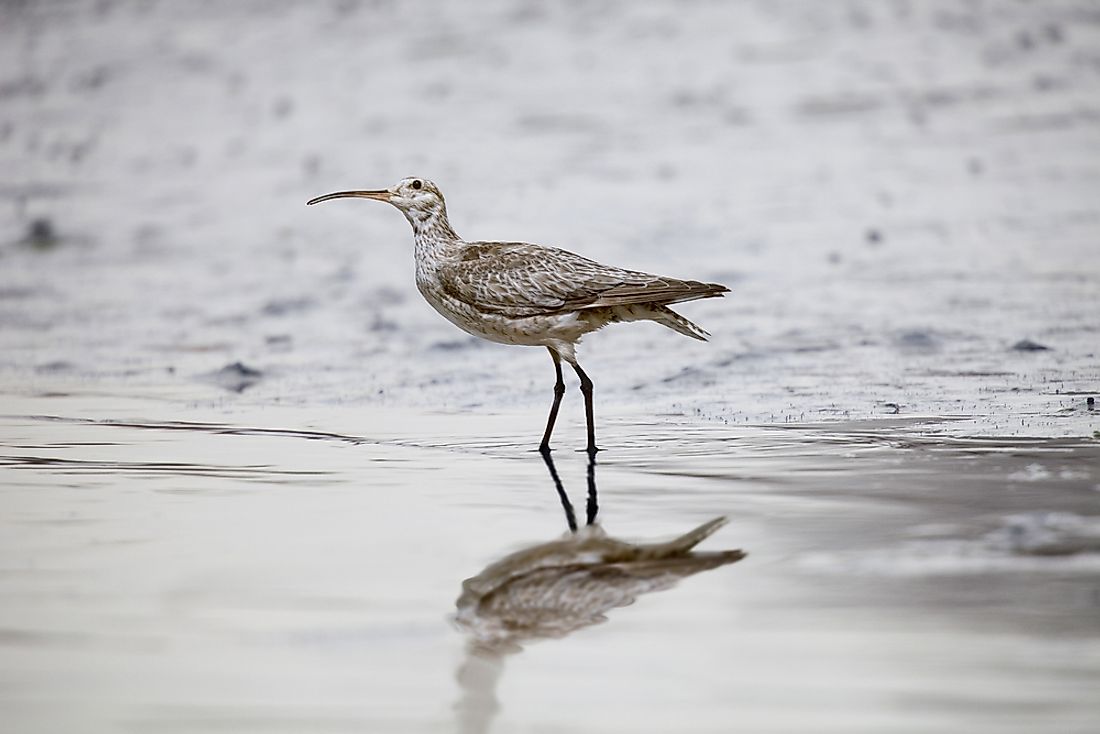6 Extinct Birds From South America

South America hosts some of the most beautiful bird species in the world. It is known as a bird continent which hosts over 3,385 different bird species. Brazil has over 1,800 while Colombia has about 1,850 species. Unfortunately, over the last centuries trapping and intensive hunting of birds has rendered some of them extinct. Some of the extinct birds of South America include:
1) Antioquia Brush-Finch
Antioquia brush finch is among the newest species in the world and it was scientifically described in 2007. It is a poorly known bird species belonging to the ‘’Passellidae’’ family. Its description is based on some museum specimens that were previously known as Slaty brush-finches in Antioquia, Colombia. Researchers collected these specimens during the 20th century, and only one of them is dated at 1971. Researchers have not been able to find this specimen again, and therefore it is considered extinct. The bird is pale grayish with black fore-face and lores. They have a reddish-brown crown-stripe which starts from their forehead. The bird had a whitish under-part. The South American classification committee approved the species description.
2) Bogota Sunangel
Bogota sunangel is a Hummingbird species that is known from only one specimen. It is bright purple with a green crown and chin as well as black flight feathers. Bogota Sunangel was indigenous to Colombia, and it is believed to have lived in the cloud forest. Most of its habitat is degraded, and since the bird has never been seen alive, it is supposed to have a relict population if it exists. The only existing evidence of its existence is a single skin-specimen which was purchased in 1909 in Bogota. Although the skin is believed to have originated from central or eastern Andes in Colombia, various specimens collected in Bogota are from as far as Ecuador.
3) Eskimo Curlew
It is one of the curlew species which is classified in the genus ‘’Numenius’’. It was one of the famous birds sighted in the tundra of Alaska and western arctic Canada, but over two million birds were killed annually during the late 1800s. Eskimo curlew, also known as northern curlew, was 12 inches long and fed on berries. They would migrate to winter in South America, mostly in Argentina. However, they have not been sighted for over thirty years now and they are currently considered extinct. They have long bills which are curved downwards with long grayish legs. Their under-side are light-brown while the upper parts are mottled-brown.
4) Glaucous Macaw
Glaucous macaw is an all-blue large South American parrot which belongs to a large group of neo-tropic parrots referred to as the Macaws. Glaucous macaw is extinct, and it is closely related to hyacinth macaw and Lear’s macaw. It is pale blue with a big grayish head. The word ‘'glaucous’’ is used to describe the bird’s coloration. Glaucous macaw is 28 inches long, with a big bill and long tail. It has a bare yellow eye ring. It was indigenous to Ilano region, Chaco, south Paraguay and north Argentina and it became extinct during the 19th century because of loss of habitat and trapping. Only two reports of wild Glaucous macaws were reported during the 19th century.
5) Hooded Seedeater
The hooded seedeater is known by a male specimen that was captured in October 1823 at the edge of a lake about 9.3 miles north of Registro do-Araguaia. It is a mysterious species which belongs to the genus ‘’Sporophila’’ of typical seedeaters. It is 4.33 inches long and oddly patterned, and various scientists consider it to be an unusual species or a hybrid of the yellow-bellied seedeaters. It has an olive upper-part, black throat and crest and dingy buff under-part. It was first described in 1870 by August von Pelzein, an Austrian ornithologist.
6) Letitia’s Thorntail
The Letitia’s thorntail also referred to as Coppery thorntail is a hummingbird species which belongs to the ‘’Trochilidae’’ family. The description of Letitia’s thorntail was obtained from the two male species which were captured in Bolivia. Although its behaviors are unknown, they are likely similar to those of the other thorntails. The male species have straight short black bills and their upper parts are bronzy-green with a white band on their rumps.











